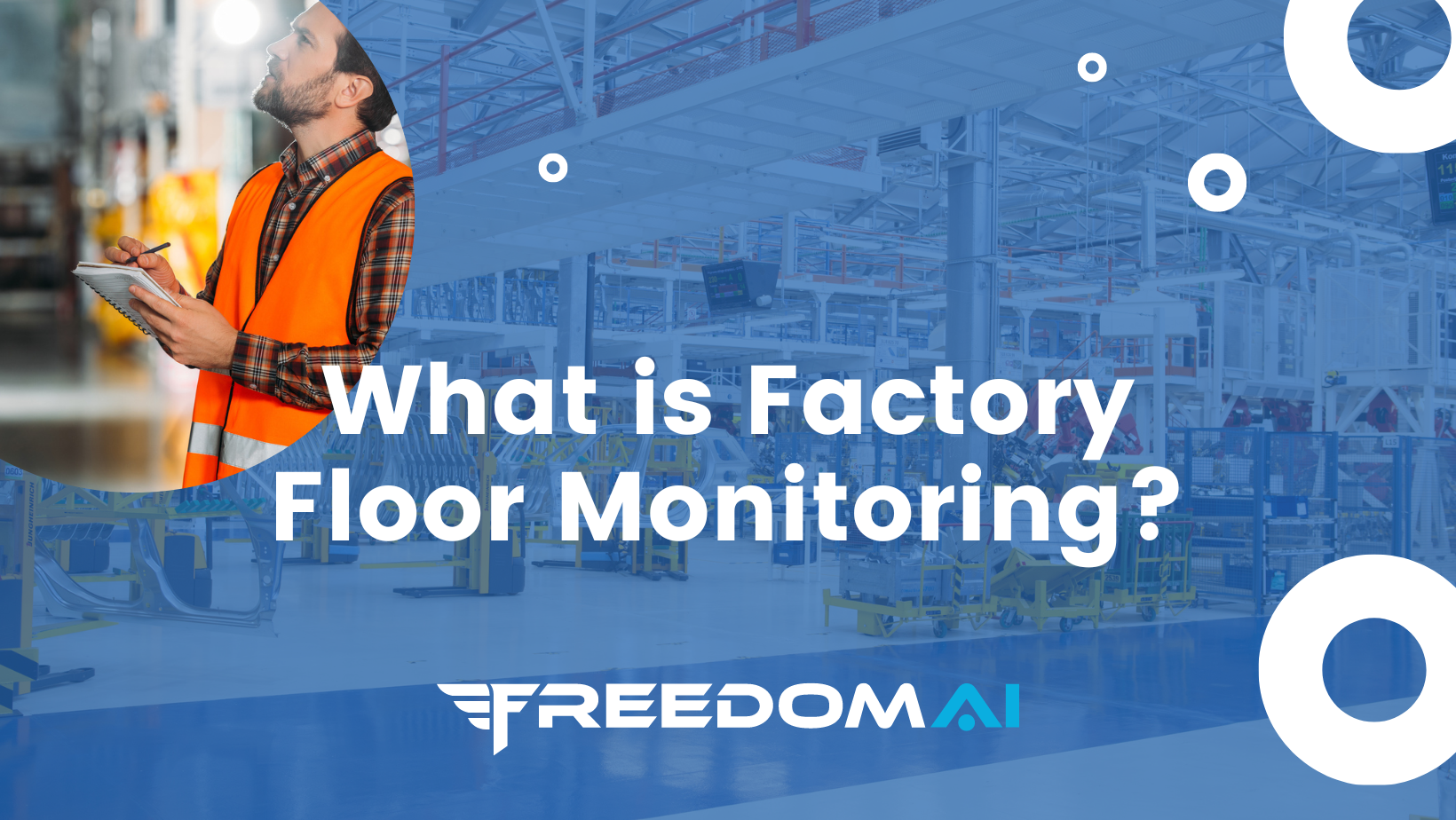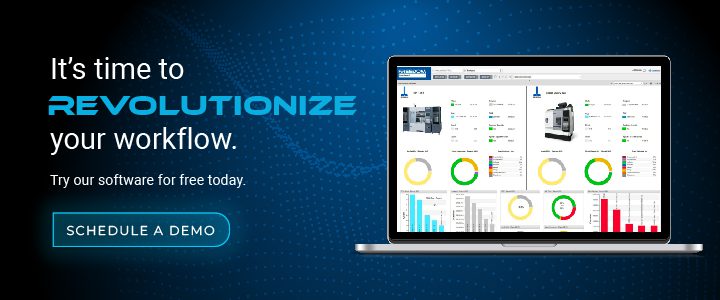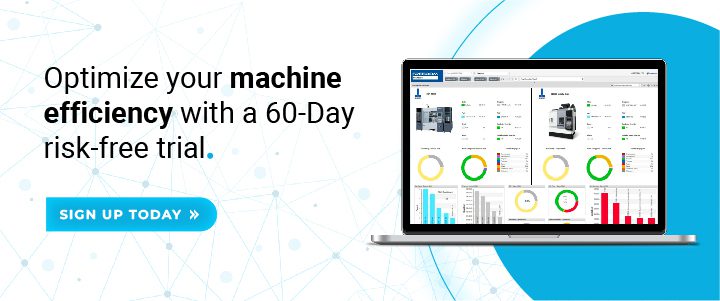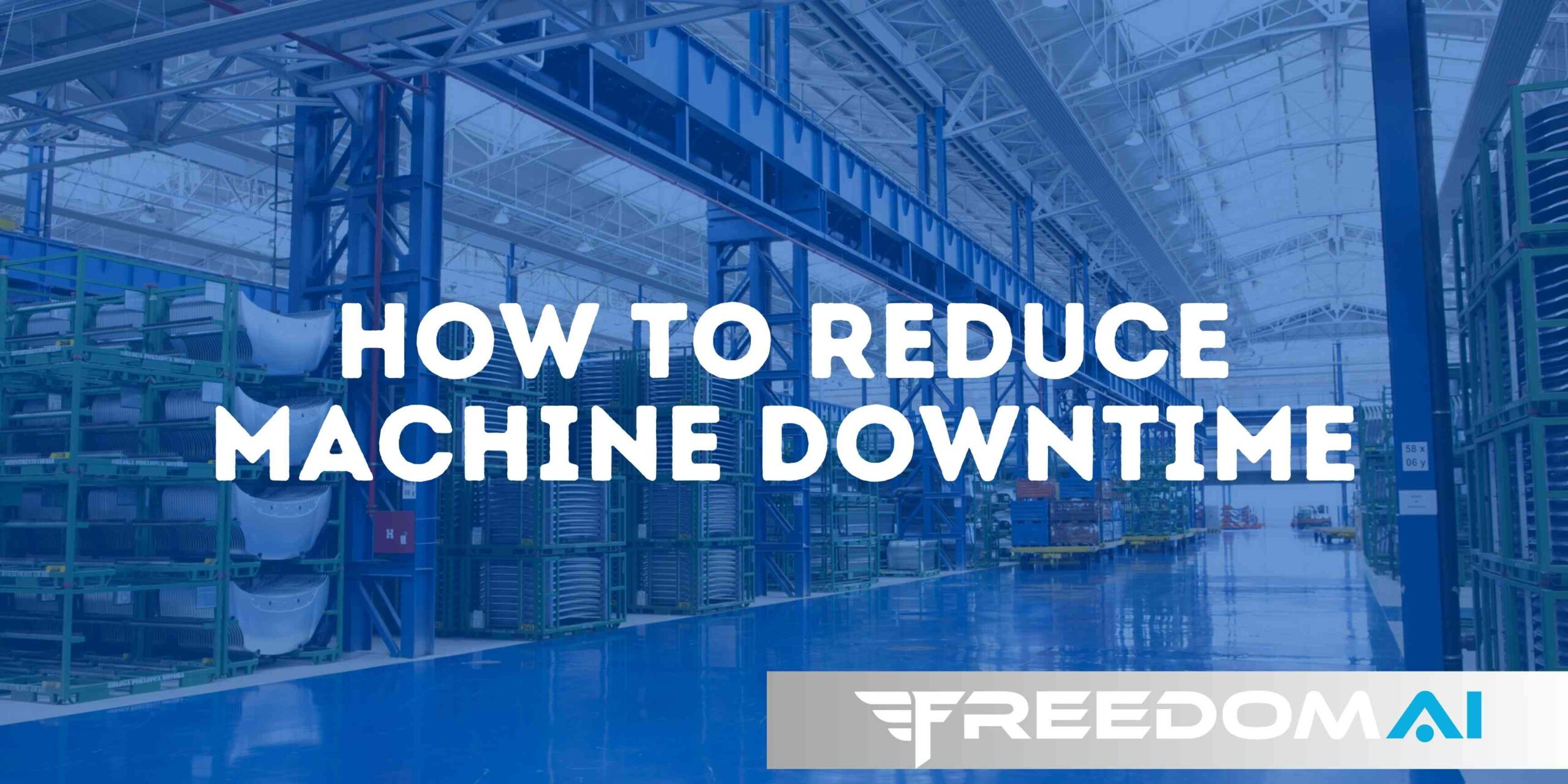Improve Productivity & Reduce Downtime with Factory Floor Monitoring
Data collection from the factory floor is a crucial part of improving manufacturing processes. The data can be used to determine how healthy machines are operating and what areas need improvement.
Process improvement refers to improving and optimizing all areas of production. One fundamental way this can be done effectively on the factory floor includes using shop-floor data collection systems to measure machine performance using Freedom’s Machine Monitoring Software.
The Benefits of Using OEE Software for Factory Floor Monitoring
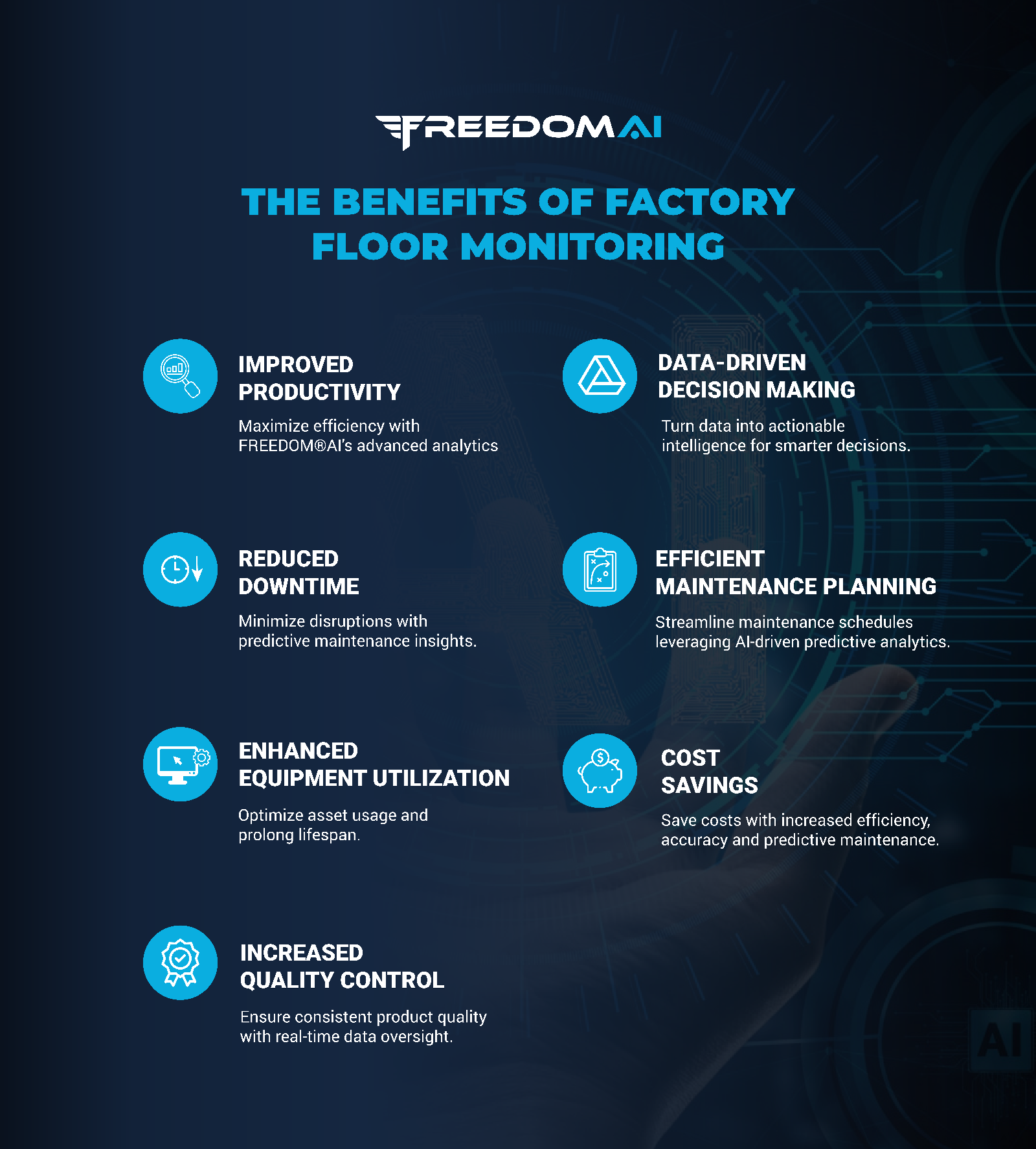
Machine monitoring software and OEE (Overall Equipment Effectiveness) software offer several benefits for businesses:
-
Improved productivity
-
Reduced downtime
-
Enhanced equipment utilization
-
Increased quality control
-
Data-driven decision making
-
Efficient maintenance planning
-
Cost savings
What is Factory Floor Monitoring?
Factory floor monitoring uses automated data collection from sensors, edge devices, and other methods to track various variables such as machine performance, equipment effectiveness, productivity, efficiency, and quality. This data is processed in a cloud-based platform where analytics and machine learning algorithms generate actionable insights for process improvements throughout the factory. By leveraging machine data, shop floor monitoring reduces downtime, improves efficiency, and enhances competitiveness for manufacturers.
Real-time monitoring on the factory floor also enables optimized financial OEE, leading to increased productivity and operational excellence across the organization. These devices automate equipment functions and provide valuable information for resource management and overall equipment effectiveness improvement.
What is Financial OEE?
Financial OEE can tell you just how profitable your inventory is. It accounts for the operating cost of all items in stock, no matter what their value may be at any given time or where they’re located on a store floor; which is why this metric has become such an important measure to evaluate financial performance.
What many people don’t know about Financial OEE (or even realize) is its ability to unveil some very interesting statistics:
• Financial OEE can tell you what inventory items have the highest scrap rates. This will help reduce unnecessary costs because you’ll know which items to avoid purchasing.
• It can also tell you which product lines are more profitable than others, allowing management to make more efficient decisions about where capital should be invested on the factory floor.
• It will tell you where to focus on operational improvements, which can extend the life of your equipment investment and lower operating costs.
Financial OEE can also be used as a powerful performance measuring stick for your employees by identifying how well they are running their process compared to others. This is because it accounts for all inventory items included in the denominator.
Why is Factory Floor Monitoring Important?
Manufacturers cannot employ efficient metrics without shop floors that effectively monitor data from sensors throughout one’s factory or plant—using an open platform so everyone can see what is going on. Because they don’t know how much inventory is on hand, assessing production rates becomes difficult.
The machine tool industry has a problem. It’s not just about how many people are staffing machines, or even the number of tools in use; it’s what those workers and their supervisors can see when they look at these devices that matter most for performance quality control.
MTConnect has gained many converts with major machine builders, controls developers, and manufacturing software companies supporting it. The open-source protocol now supports ISO 13999 for specifications of tooling data which simplifies sharing in today’s standardized world.
Despite the fact that shop-floor monitoring has been a hot topic for machine tool companies in recent years, it hasn’t really taken off yet. Estimates suggest only 4% of shops are actually monitoring their equipment at this time with many other businesses still exploring its benefits and drawbacks to see if they should invest or not.
One of the main issues that have prevented shop floor data collection from becoming commonplace is concern over how to monitor specific, individual machines and devices easily. Though they aren’t built in a ‘plug-and-play’ model, some companies have begun to use open APIs (application programming interfaces) in order to develop a way to bring the data onto their IT systems.
This allows them to share the information with other departments within their organization, as well as gather it on a single location for storage.
Why is real-time data collection important?
Collecting real-time data is critical for improving processes, but most manufacturers don’t do it. Automating the process removes human error and ensures that what you’re getting out of your measurements are as accurate as possible!
Shop-floor monitoring has been proven extremely effective in helping provide managers with actionable insights that can help them make informed decisions that help lead to increased production rates and more efficient ways of working.
By utilizing shop-floor data, companies can more accurately determine how well their machinery is performing. Many who have acted on this information realize that they don’t need all the resources they do now because of the way they were originally set up. Oftentimes, workers can be reassigned to positions that put their talents to better use.
It’s clear why it is so important for manufacturers to know where their shops really stand, but many are still on the fence about whether or not they should invest in this type of technology. It’s understandable that some companies have concerns about investing in an area that may not have a direct impact on revenues immediately, especially when job numbers and salaries can be affected.
However, for many businesses, the long-term benefits outweigh the short-term challenge. Shop floor data collection helps them better understand how well their production rates are going in order to make improvements and bring about increasing returns for the future.
Factory Floor Monitoring & Freedom IOT
Now that you’ve read about factory floor monitoring, the importance of it, and the importance of real-time data collection, the next step is getting started improving your shop floor’s efficiency.
Freedom offers real-time OEE dashboards, CNC tracking, notifications to keep you alert of your machines, and a lot more features. Come check out our award-winning OEE software.
For more information about how Freedom can help with your shop floor’s factory floor monitoring, contact Bill Horwarth at 513-719-1601 or info@freedomiot.ai
Sources:



